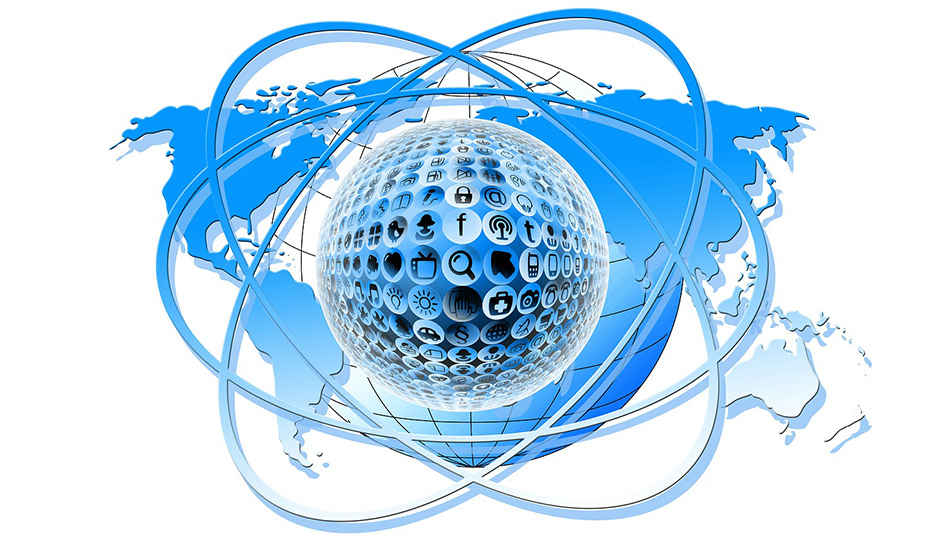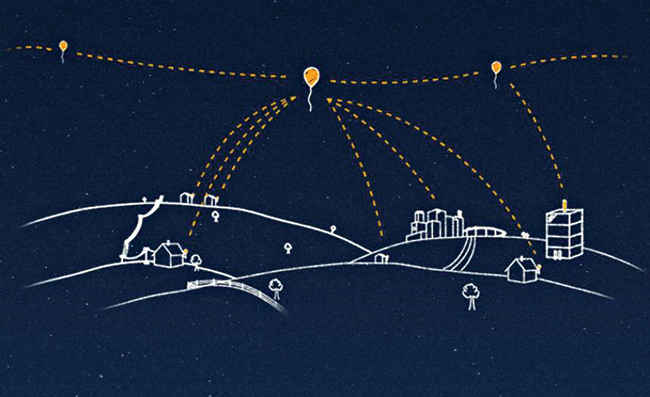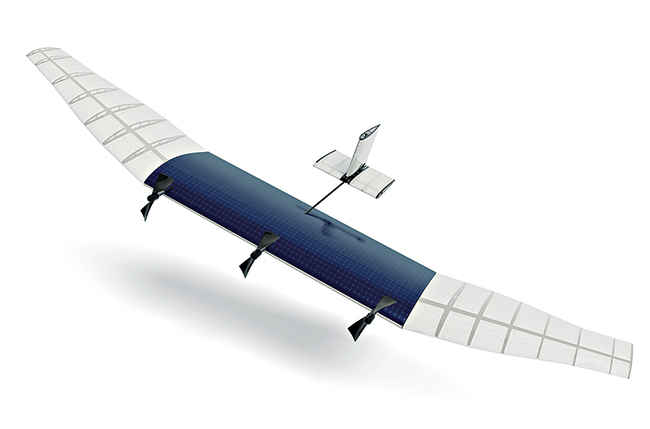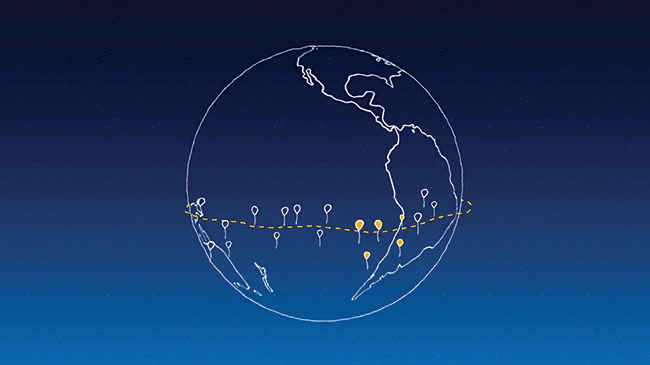How Google, Facebook and other tech giants are trying to spread the internet to every corner of the globe
The internet was supposed to be the great equaliser. But it needs to reach every nook and cranny of the globe to live up to that promise. That is soon to happen.

We are all the same form of life, living in the same world at the same time. But are all men are created equal? Absolutely. Not. Even Malcolm Gladwell would agree when we say that we are born into the circumstances that eventually shape us and define our life’s trajectory. No matter how much of a believer you are in hard work, having that little edge always helps. It may be in the form of the family name you are able to tack on (Rockerfeller or Ambani sounds pretty good right?) or it may just happen to be down to the place of your birth. However, this day and age has its benefits too. Most of us have access to a conduit of pure power, an alternate universe that puts everything within the grasp of those who reach: the Internet.
 Survey
SurveyInformation Ether
Imagine rewinding to a time before the Internet pervaded our lives. If you wanted to know anything, you had to ask someone who already knew, or search through a library catalogue hoping to find the information that you sought. Today we have the Internet – books, recipes, records, pictures, music, maps, and even complete collegiate courses – just a finger tap away. Answers of any kind (and more questions too), knowledge of any form, information in any format – if you know what you are looking for, chances are that you can find it online.
Other than entertainment and education, the Internet also allows electron-speed and light-speed communication, which is the basis for today’s globalised financial trading and commerce. Calling the Internet a ‘network’ is no different than defining our brain as one. The human brain is simply a network of interconnected neurons after all. It is much more apt to think of the Internet as a super-resource, or a combination of multiple resources; mainly communication, information, and awareness. With access to the super-resource that is the Internet, one individual can run an entire business, or a whole country can ascend to new heights as we had discussed in last month’s cover story.
| Did you Know? (stratosphere facts) |
|---|
| Called so because it is vertically stratified (has air currents in layers) |
| Has almost no turbulence, temperature rises as you move upwards |
| Contains 90% of the ozone layer |
| Contains bacteria, hence it’s also part of the biosphere |
Moreover, on the world wide web, everyone is equal in a truer sense than we are in the physical world, making it the fairest game there is. That means, no matter who you are, where or to whom you were born, if you have access to the internet and know the basics of its usage, you now have the chance to change your destiny. All men may not be born equal, but all men log on equal. You can take your life anywhere you want it to go, starting with nothing but your intentions and an internet connection. Sadly, that is what two-thirds of the world’s population lacks, and that is what some giants in the technology industry are aiming to change!
The Aim: Selfies from Siberia
Two-thirds of the world’s population has no access to Internet. There are many who live in places that can’t be reached by fibre optic cables due to economic viability. The entrepreneurially inclined audience will perceive this major problem as a major business opportunity. Two-thirds of the world without internet is potentially double the number of internet subscribers that exist today as potential subscribers. The crucial hurdle is making sure that the cost to the subscriber is low enough that it makes sense to subscribe in the first place. It will benefit both sides as the Internet is the gateway to a level playing field for the whole world, and a gateway to much needed progress and development for many. With the ultimate goal of affordable Internet access for all, who will rise to the challenge?
The Game: Internet for All
There are currently few technology-industry leaders competing for this goal with dedicated projects to deploy novel infrastructure. However, solutions for obtaining connectivity around the globe have existed for almost 15 years now in the form of satellite constellations, which are unfortunately not commercially viable without targeted business plans, and abandoned TV broadcasting frequencies Google was the first company to announce a global-scale internet-for-all project with much hype and media attention. In June 2013, Google Loon was revealed, a moonshot that had been in development within Google X labs as early as 2011. Their plan to solve the internet coverage problem? Balloons! No, this is not another imagination exercise. Fifteen metre wide Loon balloons will ride stratospheric wind currents 18-25 km above the surface of the Earth, well above airplanes and well below satellites. A network of these Loon balloons will synchronise and coordinate their movement to cover and provide connectivity to the required area, with each individual Loon balloon covering an area 40km in diameter.
The Google Loon project employs high-altitude balloons to provide internet connectivity
The balloons are filled with Helium and have a variable buoyancy system in order to control their altitude, which determines which wind current they are riding in the Stratosphere, and therefore the direction of movement. The balloons each last between 100-200 days in the atmosphere, although the electronics are re-used after it is taken out of service. The electronics hang under the balloon, and get their power from optimally aligned single-crystal high efficiency solar panels. They have a Lithium-ion battery pack for storing the energy required for use at night. The Loon balloons have transceivers that communicate on the freely available unlicensed ISM (Industrial, Scientific, Medical) bands of 2.4 GHz and 5.8 GHz, and LTE. Users have to install a special antenna to be able to connect to the internet from their remotely located homes. Information travels through the antenna, a chain of balloons, and finally to a ground station that has a connection to an ISP.
The Google’s Loon project doesn’t aim to provide standalone internet connections but utilises preexisting telecommunications infrastructure and extends it via their balloon network. Loon was first deployed and tested in New Zealand, where a farmer was the first person to use the service. Previously, his only means of connection was a satellite connection which cost over a thousand dollars! In addition to the antenna, users can get coverage directly on the phones and other LTE enabled devices (dongles) using a special Loon SIM card. After the New Zealand tests, the project has been being evaluated in Brazil, and most recently Google has signed a contract with the government of Sri Lanka. It will be the first country to have complete Loon supplied internet coverage in the world!
The Aquila drone
Soon after the announcement of Loon, in August 2013, Facebook, Samsung, Ericsson, Nokia, Opera Networks, Qualcomm and MediaTek announced the creation of internet.org. It’s a non-profit organisation aiming to deliver affordable access to selected internet services in developing countries. Not long after launch, the consortium had been criticised for being too selective with the access provided. In other words, for violating net neutrality. The consortium have opened up since then, creating the internet.org platform for anyone who meets certain specified conditions. It also launched an as-yet-unnamed project, whose official description hasn’t revealed more than the fact that it will be a network of UAVs called Aquila drones, which were developed by engineers from Ascenta – an aerospace company that Facebook acquired for this purpose. The drones beam down Internet connectivity using high-throughput lasers, however, experts remain sceptical from their initial description. Lasers inherently require line-of-sight and need to be focused, i.e., they can’t transmit across a wide field of view.
| Other noteworthy attempts (Some aren't totally dead just yet) |
|---|
| OneWeb: OneWeb's mission is to create a constellation of satellites across the globe to provide high-speed internet at low cost even to the people in the rural areas. |
| O3b: Backed by Google, HSBC and U.S. cable-TV operator Liberty Global, O3b aims to transporting your network traffic with lower latency than long haul fiber to virtually any location of your choosing. |
| Teledesic: Founded in the 1990s, Teledesic planned to build a commercial broadband satellite constellation for Internet services, using low-earth orbiting satellites to provide uplinks of as much as 100 Mbit/second. |
Satellite constellations such as Iridium have existed long before the turn of the millennium. Satellite constellations are groups of artificial satellites that work in tandem to provide coverage all around the globe as evenly as possible. The orbits of the satellites are synchronised to maximise total coverage area and minimise interference. The satellites of Iridium were manufactured by Motorola and they provide telephony and communication via 66 active satellites in orbit. Iridium Communications sells access to their products and services to major companies. Another service is the Broadband Global Area Network, which is provided thanks to the INMARSAT constellation. Globalstar and Orbcomm are also constellations similar to Iridium. Coincidentally, Iridium, Globalstar and Orbcomm have all filed for bankruptcy at some point in their corporate existence, although they have still managed to survive. A seemingly completely altruistic venture is Outernet, which is a non-profit data broadcast service started in 2014. It transmits 200MB of open information every day to users, who are required to build their own receivers. However, this player appear to have stayed out of the Internet-for-All fray. A satellite constellation that does plan to reach out to the unconnected is O3b Technologies, which is backed by HSBC and Google. There is also a constellation named OneWeb, planned to launch by 2019, composed of a whopping 700 satellites!
The Google Loon visualised
Another means of getting Internet access to places where there is none using pre-existing infrastructure, is the TV White Space spectrum. The shift to digital television means that many frequencies that were once licensed to analog TV broadcasters are now free and unused. Remember the time of cable when our televisions scanned across the whole spectrum provided (VHF and UHF) to obtain the list of channels? Television broadcasters occupied those bandwidths just as telecom companies occupy 3G/4G bandwidths. Moreover, they (analog broadcasters) had to use bands of frequencies separated by gaps in order to avoid interference, which showed up as the white noise between channels while scanning. These gaps are referred to as TV White Noise, and will be used (under certain guidelines) to broadcast the much higher throughput digital signals required for upto 15Mbps bandwidth Internet connections. Broadcasting over these frequencies (that are in the range of 54MHz to 806MHz) gives much better coverage (10km vs 100m radius) at a lower power cost compared to traditional Wi-Fi (2.4GHz and 5GHz), along with better penetration, earning this technology the nickname “Super Wi-Fi”.
Google and Microsoft have already invested in and piloted projects that provide Internet access via the White Space spectrum in the United States of America, some places in the UK and in many countries in the African continent. Recently, Microsoft has partnered with the government of Andhra Pradesh to provide low cost Internet services to four schools in the Srikakulam district. Though our current crop of devices do not have the ability to directly access this spectrum of frequencies, that is all slated to change soon.
| Satellite Constellations |
|---|
| GPS – Global Positioning System (USA) – Navigation |
| GLONASS – GLObal NAvigation Satellite System (Russia) – Navigation |
| RapidEye (Germany) – Observation (Sensitive even to changes in chlorophyll content) |
| INMARSAT (UK) – Telecommunications (Last to contact Malaysia Airlines Flight 370) |
The Flat World
With so many electromagnetic waves flying around, the winner will be soon decided. But once the playing field is level, competition will undoubtedly increase, as will transparency and efficiency in almost every facet of life. Since currencies such as the dollar are based on words rather than actual resources, money isn’t much different from circular logic. As often is the case, someone’s gain is another’s loss. Does that mean even in the Flat world, the rich will get richer and the poor will get poorer? Or will there be a natural requirement of a new world order? These questions are best left to the sociologists and anthropologists. We are here to discuss the technological aspects of a Flat world. One thing is clear, our infrastructure is expanding upwards. First to ascend was communication. Once it has proliferated to its fullest, will power be next?
With the latest advances in artificial neural networks, AI is improving in leaps and bounds. Perhaps unavoidably, it is being developed on the same networks that connect to the global Internet, which makes things pretty easy if ever an evil self-serving AI wanted to rule the world. On the bright side, since neural networks learn by example, the AI might respect us like we respect our parents. It might even invent a device that will allow digital technology to interface with our consciousness, though we will definitely invent such a device regardless. Maybe the social and technological aspects lead to the same answer: a collective human consciousness, moderated by technology? That is the ultimate equality among humans, when everyone can literally feel the same. First step: Internet for All!


